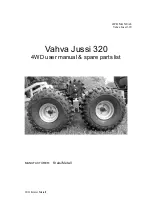
4
Q:
What kind of bales can the Roto King handle?
A:
Almost any large round bale. Corn Stalk, bean stalk, straw, alfalfa, grass etc. twine
tie or net wrap. The shorter, the dryer the product the better. Avoid long stem,
high moisture products.
Q:
Can I use the 4 stabber tines to move my stacked bales?
A:
Yes, the tines are rugged enough to position bales for loading.
Q:
What is operating height?
A:
Whatever height is comfortable for you the operator. Many operators like to
have the Roto King high enough so they can clearly see the discharge flow.
Q:
Can I reverse the turning direction to facilitate the processing of the bale?
A:
Yes. It is recommended to “reverse” the bale rotation, as needed to remove the
twine or net wrap. Reversing the bale may also be necessary if rotation of the
bale stops for any reason.
Q:
What do I do if the bale “plugs” the Roto King?
A:
By reversing the hydraulic flow back and forth, you can usually clear the plug and
return to bale processing. Under worst case scenario, it might be necessary to
dump out the bale and reload it to continue.
Q:
What kind of drive chain is used on the Roto King?
A:
The drive chain is Diamond brand #60 HS or Drives brand #60 HZ chain and
should be replaced only with properly rated chain.
Q:
How large of a bale can the Roto King handle?
A:
Size should be limited to 6’ bales or smaller.
Q:
How much time does it take to process bales?
A:
It depends on the material being handled. Corn stalks are faster then straw bales
which are faster then hay bales.
Q:
Do I need to remove the net wrap or twine from the bale before processing?
A:
It is the operator’s personal preference. You either cut the twine or net wrap off
your bales before processing or remove from rotors later.
Q:
How often do I need to clean the rotors?
A:
The cleaner you keep the rotors, the better it works; however, you can usually
process up to 20 – 25 bales before you need to clean them.





































